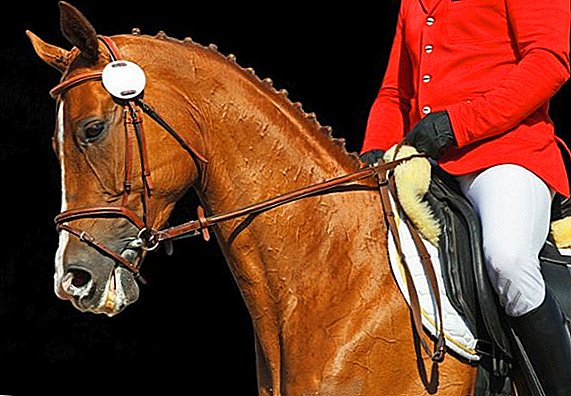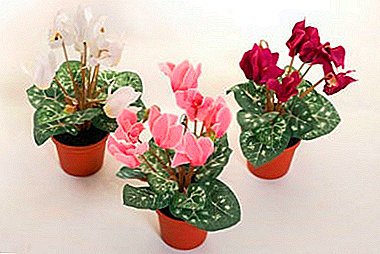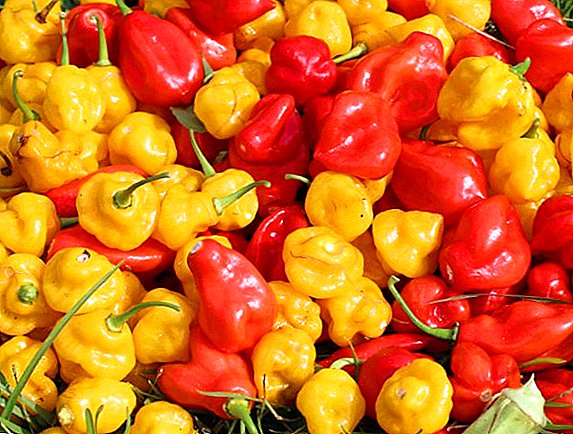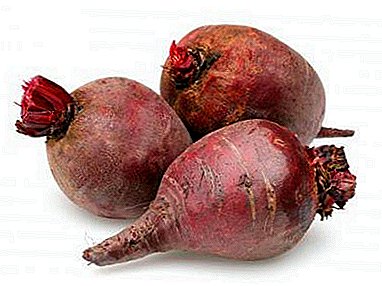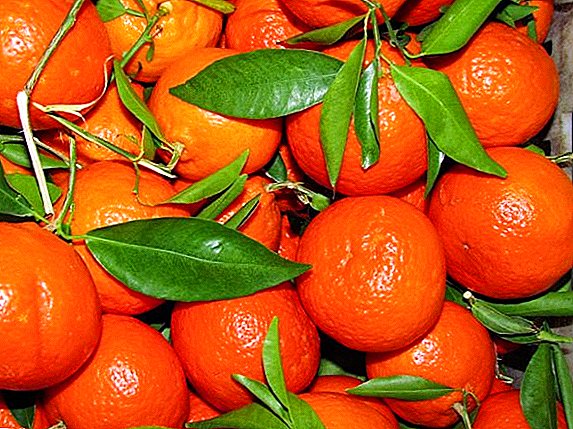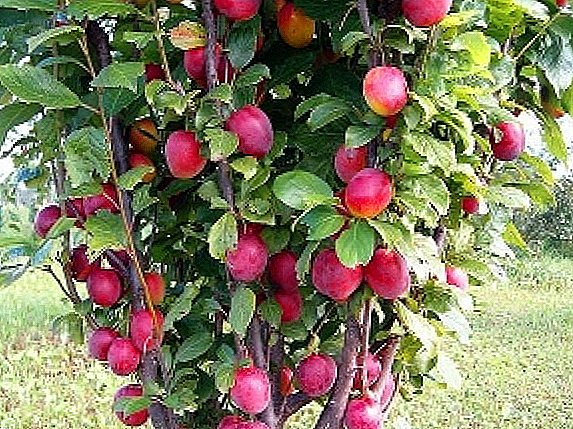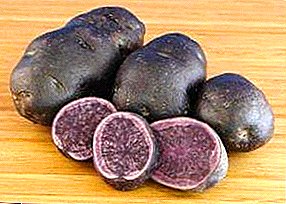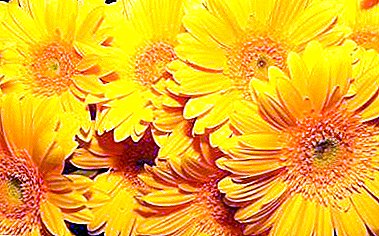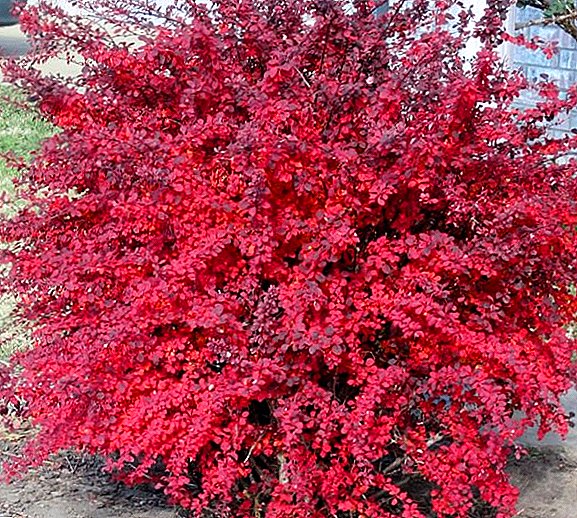 Beautiful berries, elegant twigs and lovely spines - yes, we are talking about barberry. About the miracle of this plant, many wrote long before us. Its use is popular in different spheres of human life, and the species number is striking in its diversity. Therefore, today we will talk about the most popular representatives of the Barbaris family. One of the most popular in our area is the Barberry Thunberg, which has many varieties, we will present their photo and description in this article.
Beautiful berries, elegant twigs and lovely spines - yes, we are talking about barberry. About the miracle of this plant, many wrote long before us. Its use is popular in different spheres of human life, and the species number is striking in its diversity. Therefore, today we will talk about the most popular representatives of the Barbaris family. One of the most popular in our area is the Barberry Thunberg, which has many varieties, we will present their photo and description in this article.
Aurea (Auera)
 Barberry Aurea - deciduous shrub with a rounded, dense crown. The height of the shrub of an adult plant is about 80 cm, and the girth is 1 m. In summer, the barberry is yellow on well-lit areas and light green in the shade. This bush grows very slowly, for a year it can grow only by 10 cm, it reaches its final size after 10 years of life. The flowering period is short, 10-15 days. Flowers of saturated color, with a diameter of 1 cm, grow in inflorescences of 2-5 pieces. The egg-shaped leaves of this species are golden yellow in summer, and by autumn they begin to darken and become red-yellow or orange.
Barberry Aurea - deciduous shrub with a rounded, dense crown. The height of the shrub of an adult plant is about 80 cm, and the girth is 1 m. In summer, the barberry is yellow on well-lit areas and light green in the shade. This bush grows very slowly, for a year it can grow only by 10 cm, it reaches its final size after 10 years of life. The flowering period is short, 10-15 days. Flowers of saturated color, with a diameter of 1 cm, grow in inflorescences of 2-5 pieces. The egg-shaped leaves of this species are golden yellow in summer, and by autumn they begin to darken and become red-yellow or orange.
It is better to choose a well-lit place for growing Aurea, but the plant tolerates a slight shade too. Despite the fact that the bush is frost-resistant, it is better to protect it from drafts and cold winds. The soil can be any, but good moisture will improve the growth of the barberry. Most often, this type is used to design borders and alleys.
Atropurpurea (Atropurpurea)

Barberry Atropurpurea (popularly "redberry") has a large rounded crown. This type of durable - grows about 60 years. The shrub grows rather quickly - 25 cm in height and 35 cm in width in one year. For 5-10 years it develops to full size: 2.5 meters wide and 3.5 m in girth. It blooms yellow from the inside with flowers, from the outside the flowers are red, round shape. The flower is small, its size is 1 cm. In the brush, usually 2-5 flowers each.
The flowering period is short - 10-15 days (2-3 weeks of May). The leaves of this plant in the summer reddish-brown, with the cold, they become red. Places loves sunny, easily tolerates shading. Plant better in moist soil.
Important!Despite the fact that Atropurpurea tolerates frosts, at a young age it is better to cover the plant for the winter.
Atropurpurea Nana (Atropurpurea Nana)
 Flower growers usually abbreviate the name of this species and are pronounced Nana barberry. It is a dwarf barberry with a flat-round crown, which grows very slowly, and grows no more than 10 cm high and 15 cm wide in a year, and even less on poor, dry soils. The absolute size is 60 cm in height and approximately 1 m in width. The inner side of the flower is yellow, the outer one is red.
Flower growers usually abbreviate the name of this species and are pronounced Nana barberry. It is a dwarf barberry with a flat-round crown, which grows very slowly, and grows no more than 10 cm high and 15 cm wide in a year, and even less on poor, dry soils. The absolute size is 60 cm in height and approximately 1 m in width. The inner side of the flower is yellow, the outer one is red.
It blooms for a short time - 10-15 days, and the growing season lasts from the beginning of May to the end of September. The leaves of a low-growing barberry change their color depending on the temperature: in the summer - dark, purple-red, and in the fall - saturated red.
It is better to plant in a well-lit place, However, if this is not the case, then the bush will easily transfer the light shadow. Barberry Nana has a high resistance to frost and a strong love for well-moistened soils. The plant looks especially beautiful during flowering and at the time of changing the color of the leaves in early autumn.
Harlequin (Harlequin)

Barberry Harlequin - bushes rather slow growth. It is rather difficult to confuse this species with others, because its crown is very spreading, and the leaves are spotty (red, with gray and white stains and spots). Shoots are not stiff, studded with small spines.
Flowering begins from the end of May and continues until the beginning of June. The flowers are yellow on the inside and red - on the outside can be collected in inflorescences, and can be single. Flowers are located throughout the area of escape. Ellipsoidal, glossy fruits of bright red color, 10 cm in size appear after flowering. The bush prefers alkaline soils, however, it can grow in almost any soil. Choose a better lit well spot. The bush quietly tolerates heat and frost, but at a young age it is better to cover the plant.
Bonanza Gold (Bonanza Gold)
 Barberry Thunberg has many varieties, among them Bonanza Gold, a description and photo of which can be found on different sites and in our article.
Barberry Thunberg has many varieties, among them Bonanza Gold, a description and photo of which can be found on different sites and in our article.
Bonanza Gold is a bush-owner of a very lush, cushion-shaped crown. This barberry undersized reaches 50 cm in height and 70 in width. The leaves of this species simply “shine” with their lemon-emerald bright color, which makes it appear that even in gloomy weather the bush is illuminated by the sun. The flowers of Bonanza Gold are of a soft yellow color, pleasant to the touch. They can grow alone and in bundles. Fruits of bright red color, oblong form ripen in October.
Leaving is rather simple: it is better to choose the soil alkaline; one should avoid stagnation of water and choose a well-lit place for the plant. Bush "steadfastly" tolerates frost and heat, however, at very low temperatures it can freeze to the root of the neck.
Vermillion (Vermillion)
Barberry Vermillion - one of the most prominent representatives of the barberry Thunberg, which is poorly represented on the sites about barberry varieties, it is quite difficult to find his photo and description. This representative reaches the peak of its beauty and decoration in the autumn when the leaves turn bright red, although in summer they are green. Crohn densely branched, fairly dense and symmetrical: 1 m in height and 1 m in width.
Blooms, like all representatives, short-lived (up to 20 days) small yellow flowers, collected in a brush or single. On the branches there are a small number of spines. The berries are oblong, bright red, ripen in mid-September - early October.
Helmond Pillar
 This plant has straight vertical branches and grows in the form of a column. It grows up to 1.5 m in height, the size of the crown is 0.5 m. The growth rate is very slow, and the barberry reaches its final size in 8-10 years of development. In the process of development, the shrub not only changes in size, but also changes the color of the leaves: from reddish-pink to bright purple.
This plant has straight vertical branches and grows in the form of a column. It grows up to 1.5 m in height, the size of the crown is 0.5 m. The growth rate is very slow, and the barberry reaches its final size in 8-10 years of development. In the process of development, the shrub not only changes in size, but also changes the color of the leaves: from reddish-pink to bright purple.
The place for growth is better to choose light, but the plant is able to live in the shade, however, the leaves may lose color and become green. Despite the decorative, well tolerated urban conditions. It is quite resistant to frost, but annual tops of young shoots can freeze slightly.
Important!In the spring, you need to cut off the frozen shoots and replant the plant every 5 years for the purpose of rejuvenation.
This type of soil prefers alkaline and does not tolerate stagnant water.
Golden Pillar

It grows in the form of a column with a wide crown, the plant is larger than Gelmond Pillar, 1.9 meters in size and 90 cm wide. The color of the leaves varies depending on the season: from yellow in spring to green in summer and bright red in autumn. Loves bright places, in a shadow or a penumbra can lose color. It looks very good in the gardens, as a "rim" of the alleys and in city parks. Frost - at a high level, as well as in other types of barberry Thunberg.
Golden Ring
 The barberry Golden Ring has a wide crown and reaches a size of 1.5 meters in height. It grows by about 15 cm per year and grows in 10 years to full size. The leaves of this species are round, or almost round, wide, purple-red color with a yellow rim along the edge.
The barberry Golden Ring has a wide crown and reaches a size of 1.5 meters in height. It grows by about 15 cm per year and grows in 10 years to full size. The leaves of this species are round, or almost round, wide, purple-red color with a yellow rim along the edge.
Did you know?The rim of the plant appears only in the middle of summer!
Flowering begins in late May - early June, depending on weather conditions. The flowers are yellow on the outside and red on the inside are located throughout the shoot and can be single or collected in inflorescence. Fruits Golden Ring ripen in September, immediately after flowering. Berry ellipsoidal, pink or red. Sometimes the berries can winter on the branches.
The plant loves light, but can grow well in partial shade. It tolerates frosts well, but it can lose some of the branches after hibernation in winter, but they are quickly and easily restored. Every spring you need to carry out sanitary pruning, it will improve the decorative appearance of the plant.
Green Ornament
 In this type of barberry, the crown grows straight upright, the shoots are thick, fleshy. The size of the bush from 1-1.5 in height. The leaves change their color as they age: during blooming, they are brown-reddish, then yellow-green, and the last stage of color change is orange or brown-yellow. It grows rather slowly. Three-part thorns are formed on young shoots of yellowish or purple-red color.
In this type of barberry, the crown grows straight upright, the shoots are thick, fleshy. The size of the bush from 1-1.5 in height. The leaves change their color as they age: during blooming, they are brown-reddish, then yellow-green, and the last stage of color change is orange or brown-yellow. It grows rather slowly. Three-part thorns are formed on young shoots of yellowish or purple-red color.
Flowering begins in early June. The flowers are red outside and yellow - inside. Flowers are scattered over the entire area of escape, "singly" or in inflorescences. The fruits ripen in September and reach 10 mm in diameter.
The plant is light-loving, but it tolerates shade well, although it loses its decorative appearance in the shade. Prefers alkaline soil, preferably with drainage. In urban conditions it is used in garden compositions, in the design of borders, as a hedge.
Cabernet (Kabernet)
 This short barberry grows slowly, reaching 80 cm in height and 1 meter in diameter. On his body has thorns. The leaves gradually change their color from crimson to fiery red-orange, passing through maroon. The flowers are small, blooming throughout the area of the shoot, delicate yellow color. The berries are red, appear after flowering. The bush loves well-lit places, unpretentious to the ground and frost resistant. Gardeners recommend annual prophylactic cutting every spring.
This short barberry grows slowly, reaching 80 cm in height and 1 meter in diameter. On his body has thorns. The leaves gradually change their color from crimson to fiery red-orange, passing through maroon. The flowers are small, blooming throughout the area of the shoot, delicate yellow color. The berries are red, appear after flowering. The bush loves well-lit places, unpretentious to the ground and frost resistant. Gardeners recommend annual prophylactic cutting every spring.
Coronuta
 Barberry Koronuta does not differ in height from other representatives of the Barberry Thunberg. Adult plant reaches a height of 1 meter. The crown is folded arcuate shoots, its diameter is 1.5 meters. This species is one of the most expensive in the flower market. The bush grows slowly, the leaves are bordered with bright green color.
Barberry Koronuta does not differ in height from other representatives of the Barberry Thunberg. Adult plant reaches a height of 1 meter. The crown is folded arcuate shoots, its diameter is 1.5 meters. This species is one of the most expensive in the flower market. The bush grows slowly, the leaves are bordered with bright green color.
The flowers are yellow, collected in inflorescences, can grow one by one. The berries remain on the bush for a long time and appear after flowering. Like other species, unpretentious to the soil, tolerates frost and heat, quietly develops in the shade, although it may lose the decorative appearance of the leaves.
Kobold
 Barberry Kobold is a dwarf shrub, littered with small glossy green, ovate-shaped leaves, which become yellow-purple by the summer. The height of the bush is 50 cm. Shoots of red with a brown tint of color appear in early April, have thorns. The diameter of the plant is 50 cm.
Barberry Kobold is a dwarf shrub, littered with small glossy green, ovate-shaped leaves, which become yellow-purple by the summer. The height of the bush is 50 cm. Shoots of red with a brown tint of color appear in early April, have thorns. The diameter of the plant is 50 cm.
It usually blooms in early May with yellow-red flowers that grow up to 1 cm in diameter. Red or pink fruits ripen in September and may remain to hibernate on the bush. The plant is unpretentious, and grows well both in the shade and in the illuminated areas. Requires alkaline soil, good moisture, but not stagnant water.
Important!It is better to buy already acclimatized plants.
Maria
 Maria is a yellow barberry variety, the leaves are golden yellow in spring and orange-red in autumn. The shrub grows slowly, and the final size of the plant is 1.2 meters tall and 1 m in diameter. The crown is rounded with vertical shoots, eventually branching out. Young shoots have red tips. The leaves are round, egg-shaped, broad with a carmine-red border. The flowers are small, yellow, have an unpleasant smell.
Maria is a yellow barberry variety, the leaves are golden yellow in spring and orange-red in autumn. The shrub grows slowly, and the final size of the plant is 1.2 meters tall and 1 m in diameter. The crown is rounded with vertical shoots, eventually branching out. Young shoots have red tips. The leaves are round, egg-shaped, broad with a carmine-red border. The flowers are small, yellow, have an unpleasant smell.
The bush fructifies in September with bright red fruits with a glossy shine. The bush is unpretentious to the place of growth, it is frost-resistant. It is better to plant in places protected from cold winds and drafts. Formative pruning should be done twice a year. This type is used as a hedge, to decorate balconies, winter gardens.
Minor
 The barberry of Thunberg Minor is a dwarf barberry variety that grows up to 25 cm. With a spherical dense crown, a few prickles and dark red color of the branches. Young shoots on a tone two lighter. The leaves are not very large, egg-shaped, with a solid edge. From the outside the sheet is green, from the inside - gray. The flowers are yellow-red, gathered in a brush of 2-5 pieces. Fruits in the beginning of autumn small red oval-shaped berries. Unpretentious care.
The barberry of Thunberg Minor is a dwarf barberry variety that grows up to 25 cm. With a spherical dense crown, a few prickles and dark red color of the branches. Young shoots on a tone two lighter. The leaves are not very large, egg-shaped, with a solid edge. From the outside the sheet is green, from the inside - gray. The flowers are yellow-red, gathered in a brush of 2-5 pieces. Fruits in the beginning of autumn small red oval-shaped berries. Unpretentious care.
Orange Dream (Orange Dream)
 Barberry Orange Dream - a small shrub that grows up to 70 cm, is defined as dwarf. The crown is spreading, dotted with wide lanceolate leaves of bright orange color in the summer and maroon-red in the autumn. It blooms with small yellow flowers in May. The flowering period is not long term. The shoots are bright red and oval in shape in late August - early September. The grade is unpretentious, frost-and heat-resistant, well tolerates a haircut.
Barberry Orange Dream - a small shrub that grows up to 70 cm, is defined as dwarf. The crown is spreading, dotted with wide lanceolate leaves of bright orange color in the summer and maroon-red in the autumn. It blooms with small yellow flowers in May. The flowering period is not long term. The shoots are bright red and oval in shape in late August - early September. The grade is unpretentious, frost-and heat-resistant, well tolerates a haircut.
Did you know?The soil for this species must be with a higher level of acidity than for other varieties of barberry.
Pink Etraction (Pink Etraction)
 The size of this bush is typical for most varieties of Barberry Thunberg - 1-1.2 meters. The leaves of this species are spotty: green with pink spots throughout the leaf area. Blooms yellow-red color, fruits in early autumn. The plant is drought-and frost-resistant, prefers soils with a fairly high level of acidity. Unpretentious, but you need to protect from the cold wind and stagnant water.
The size of this bush is typical for most varieties of Barberry Thunberg - 1-1.2 meters. The leaves of this species are spotty: green with pink spots throughout the leaf area. Blooms yellow-red color, fruits in early autumn. The plant is drought-and frost-resistant, prefers soils with a fairly high level of acidity. Unpretentious, but you need to protect from the cold wind and stagnant water.
Red Carpet (Red Carpet)
 The branches of this shrub razlohie, smoothly curved. Crown pincushion, shoots studded with spines. The bark of the branches is brownish yellow. The leaves change color, as in many varieties of barberry: in the spring the leaves are bright green, in the fall - orange-yellow. Flowers are located throughout the shoot: bright yellow inside and red on the outside, gathered in inflorescences. Fruits are oblong in shape, bright red with a glossy shine. Appear on the bush after flowering and can remain for the whole winter. The bush is unpretentious, frost-resistant, but the tops can freeze slightly, likes an alkaline environment in the ground, does not tolerate stagnant water.
The branches of this shrub razlohie, smoothly curved. Crown pincushion, shoots studded with spines. The bark of the branches is brownish yellow. The leaves change color, as in many varieties of barberry: in the spring the leaves are bright green, in the fall - orange-yellow. Flowers are located throughout the shoot: bright yellow inside and red on the outside, gathered in inflorescences. Fruits are oblong in shape, bright red with a glossy shine. Appear on the bush after flowering and can remain for the whole winter. The bush is unpretentious, frost-resistant, but the tops can freeze slightly, likes an alkaline environment in the ground, does not tolerate stagnant water.
Red Chef (Red Chief)
 Barberry Red Chef - deciduous shrub with major red-brown ribbed, spiky studded shoots, which grow vertically and with additional, drooping branches. When the plant is already adult, it grows in a funnel-shaped form. This view is quite large: height - 2.5 meters, and in the amount of 1.5 meters.
Barberry Red Chef - deciduous shrub with major red-brown ribbed, spiky studded shoots, which grow vertically and with additional, drooping branches. When the plant is already adult, it grows in a funnel-shaped form. This view is quite large: height - 2.5 meters, and in the amount of 1.5 meters.
Yellow flowers, collected in small brushes, appear in May. After flowering, oval fruits form a bright red or pink color. The root system is very developed: a large number of main roots with thin processes. Grows well in urban environments, frost-resistant, calmly and direct sunlight and shade.
Smaragd
 The shape of this shrub is straight vertical. The bush is large, it grows up to 2 m. The crown is wide, pyramidal in shape. The leaves are small, in spring green, in autumn - turn yellow. The shoots are covered with brown small thorns. It blooms in spring, the color is yellow. After flowering fruits appear red, oval-shaped and can remain on the bush until the first frost, and even winter on the branches. The root system is under the surface of the earth.
The shape of this shrub is straight vertical. The bush is large, it grows up to 2 m. The crown is wide, pyramidal in shape. The leaves are small, in spring green, in autumn - turn yellow. The shoots are covered with brown small thorns. It blooms in spring, the color is yellow. After flowering fruits appear red, oval-shaped and can remain on the bush until the first frost, and even winter on the branches. The root system is under the surface of the earth.
Plants photophilous, winter-resistant. The only thing that “bush” simply “requires” is regular pruning before bud break. Very often used for single planting in gardens.
Everyone can choose a favorite variety from the representatives of Barbaris Thunberg to their own taste, because the plants are diverse in color, size. Regardless of what you choose for yourself, it will be the right choice, because Barberry will delight with its beauty for many years.



